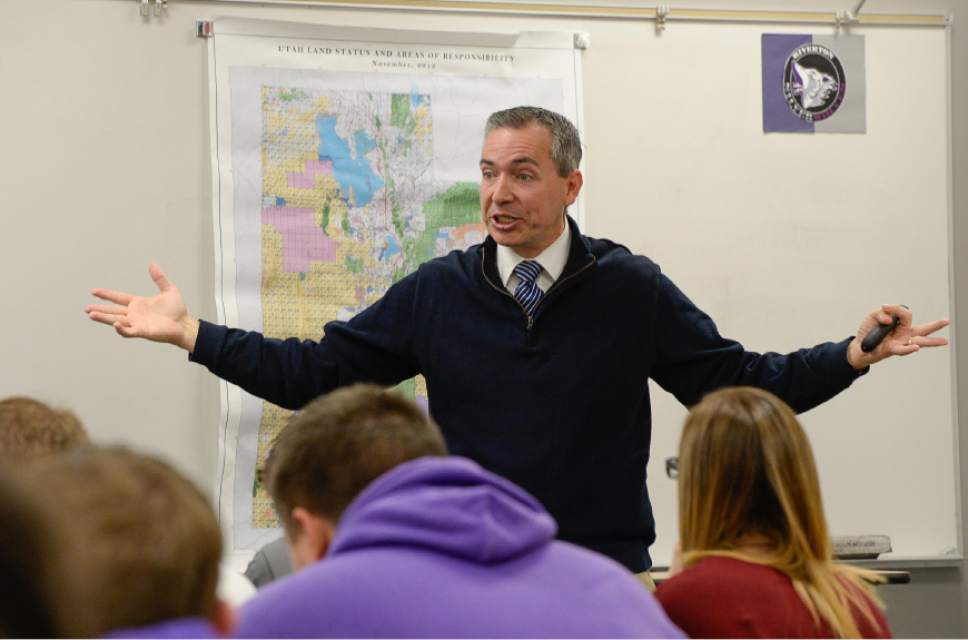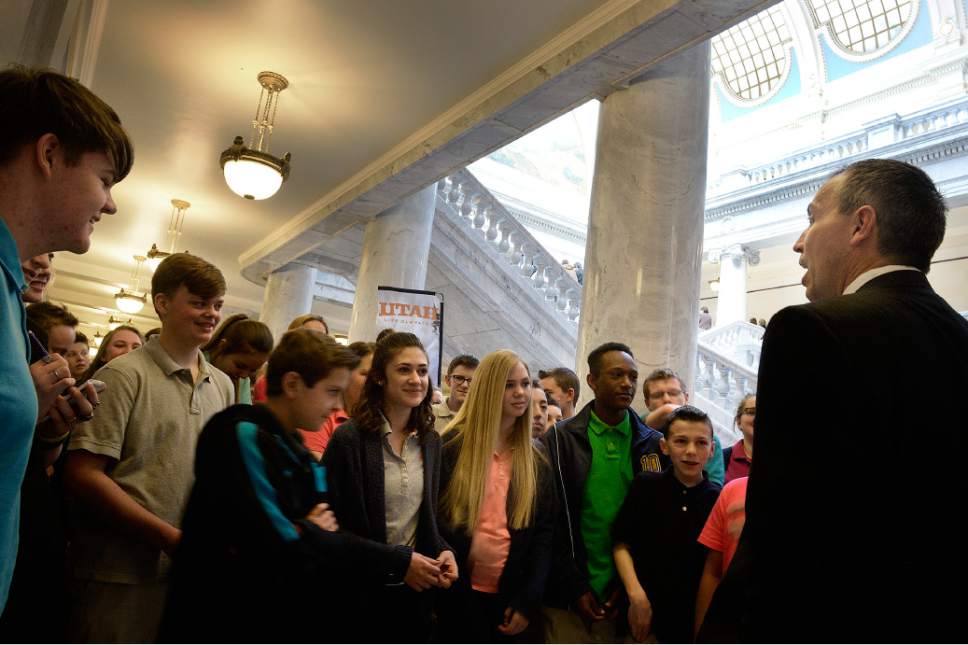This is an archived article that was published on sltrib.com in 2017, and information in the article may be outdated. It is provided only for personal research purposes and may not be reprinted.
Utah lawmakers are looking to increase per-student education spending by roughly $90 million this year, a 3 percent increase, and end the practice of charging fees for educator licenses.
Those budget recommendations were finalized Monday by the Public Education Appropriations Subcommittee in a list of funding requests totaling more than $190 million.
Subcommittee co-chairman Rep. Dan McCay, R-Riverton, said lawmakers are committed to prioritizing the weighted pupil unit, or WPU, Utah's per-student funding formula.
School districts have asked for a minimum per-student increase of 2.5 percent in order to keep pace with inflated costs, but previous drafts of the education budget listed only a 1 percent bump to the WPU.
"There was never a serious conversation, in front of the scenes or behind the scenes, that we would ever be below what the state [school] board has requested — which is 2.5 [percent]," McCay said.
At $90 million, a 3 percent per-student increase shrinks the revenue left for other legislative funding requests.
The priorities list includes $5 million for teacher supplies and $2 million for regional service centers. But a $10 million item for special education services was reduced to $1.2 million, and funding for school technology grants was removed entirely.
State Superintendent Sydnee Dickson said the recommendations mirror the funding priorities set by the Utah Board of Education, with the exception of technology funding, for which the board had requested $10 million.
She said she appreciated that lawmakers had addressed the concerns of school districts by adding funding to the WPU.
"For most [districts] it will help a little bit with some flexibility," she said, "and allow them to keep the doors open with current costs."
The budget panel gave itself a ceiling of $175 million, McCay said, and the combined cost of $68 million for enrollment growth and a 3 percent bump in per-student spending is more than $150 million.
"That will come with some sacrifice and you'll see the details of that soon," he said.
The cost of funding teacher's licenses, McCay said, is another $2.6 million. Most licensing fees range from $20 to $75, with renewals after a teacher's first three years and each subsequent five years.
The Utah Board of Education is currently considering raising the costs of licensing fees, but McCay said paying those costs with state funding is a show of support for educators.
"We recognize that this is not a major pay increase," he said. "It just makes it so our educators don't have a fee and don't have to pay their employer to keep working."
Heidi Matthews, president of the Utah Education Association, applauded the move by lawmakers to pay for licensing costs. She said even something as small as a license renewal contributes to the state's teacher shortage, with more than half of all educators leaving the profession in their first five years.
"The house is on fire with the teacher shortage," Matthews said. "Any legislation that happens has got to have that be a laser focus."
School board spokeswoman Emilie Wheeler said conversations with lawmakers are ongoing regarding licensing fees and other budgetary issues.
"Currently, we are bound by statute to charge fees for all licensing functions," she said. "We anticipate additional dialogue on the matter."
Final budget decisions are made by the Executive Appropriations Committee based on, but not limited to, the recommendations of the various funding subcommittees.
The Senate's budget chairman, Sen. Jerry Stevenson, R-Layton, said the public education recommendations are not unreasonable based on current revenue estimates.
The state anticipates roughly $285 million in new revenue, Stevenson said, and updated figures are expected by the end of this week.
"We don't know what they are [yet]," Stevenson said. "We're not excited."
Twitter: @bjaminwood





